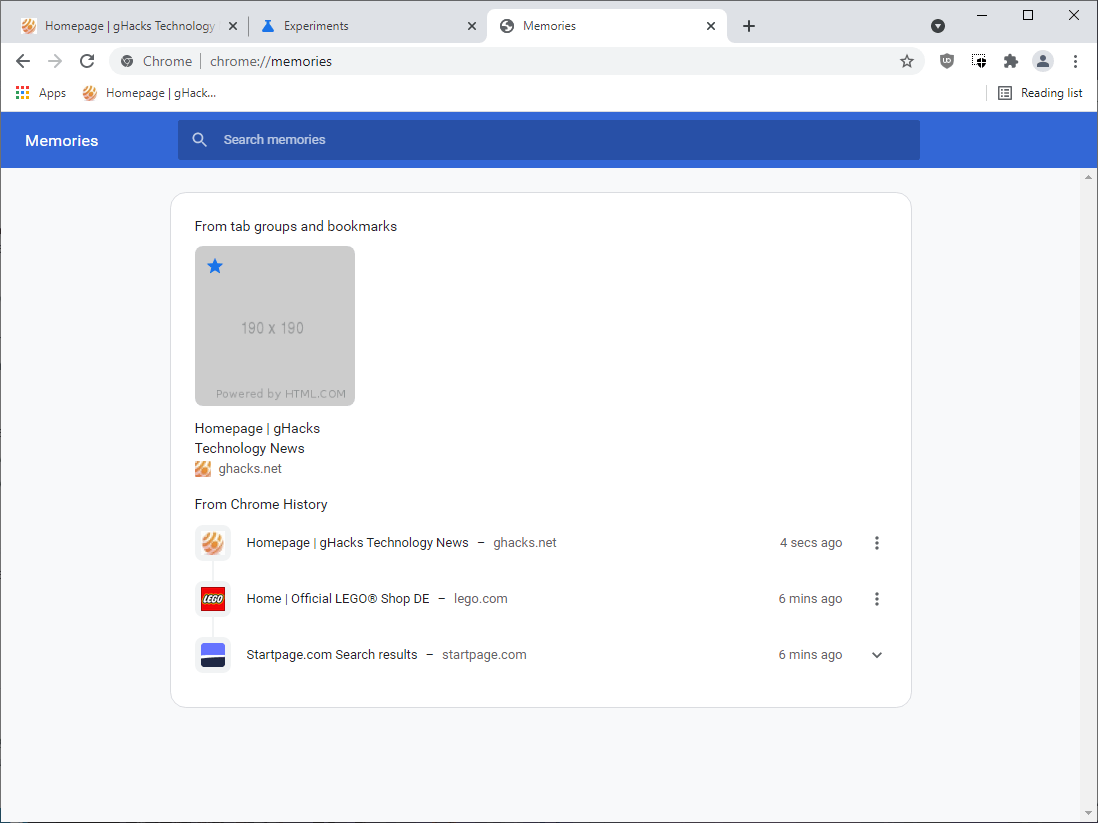- Aug 17, 2014
- 11,777
Google engineers have added a new feature to the company's Chrome web browser recently. Called Memories, it is currently only available in Canary versions of the web browser.
Memories, as the name implies already, is a new interface to display browsing history information. Chrome's original browsing history lists visited sites in chronological order. You can open it via the main menu or by loading chrome://history directly in the browser's address bar.
Each entry is listed with time and date, icon, page title and address. Sites can be reopened or removed from the history.
Chrome Memories

You may access the Memories feature by loading chrome://memories in the browser. Currently, it is necessary to enable it first: here is how.
- Load chrome://flags/#memories in the browser's address bar.
- Set the flag to Enabled.
- Restart Google Chrome.

Chrome populates memories after the restart. It won't pull data from the existing browsing history, a fresh start so to speak.
Once you have visited a few sites, e.g. from your bookmarks, by entering addresses in the Chrome address bar, or by clicking on links, you will see these appear on the Memories page.
One core difference to the main history page of the browser is that the data is sorted in a different way.
Chrome Memories displays sites opened from tab groups or bookmarks separately in the interface. While you do get a chronological list of visited sites as well, each site is represented by a single expandable entry representing the last visited page on that site. The latter makes it easier to find a particular site as the history listing is not as detailed as Chrome's main browsing history listing. You can expand listings to list all visited pages of the site.

Google is working on a new browsing history interface called Memories in Chrome - gHacks Tech News
Google engineers have added a new feature to the company's Chrome web browser recently. Called Memories, it is currently only available in Canary versions of the web browser.
